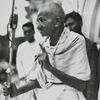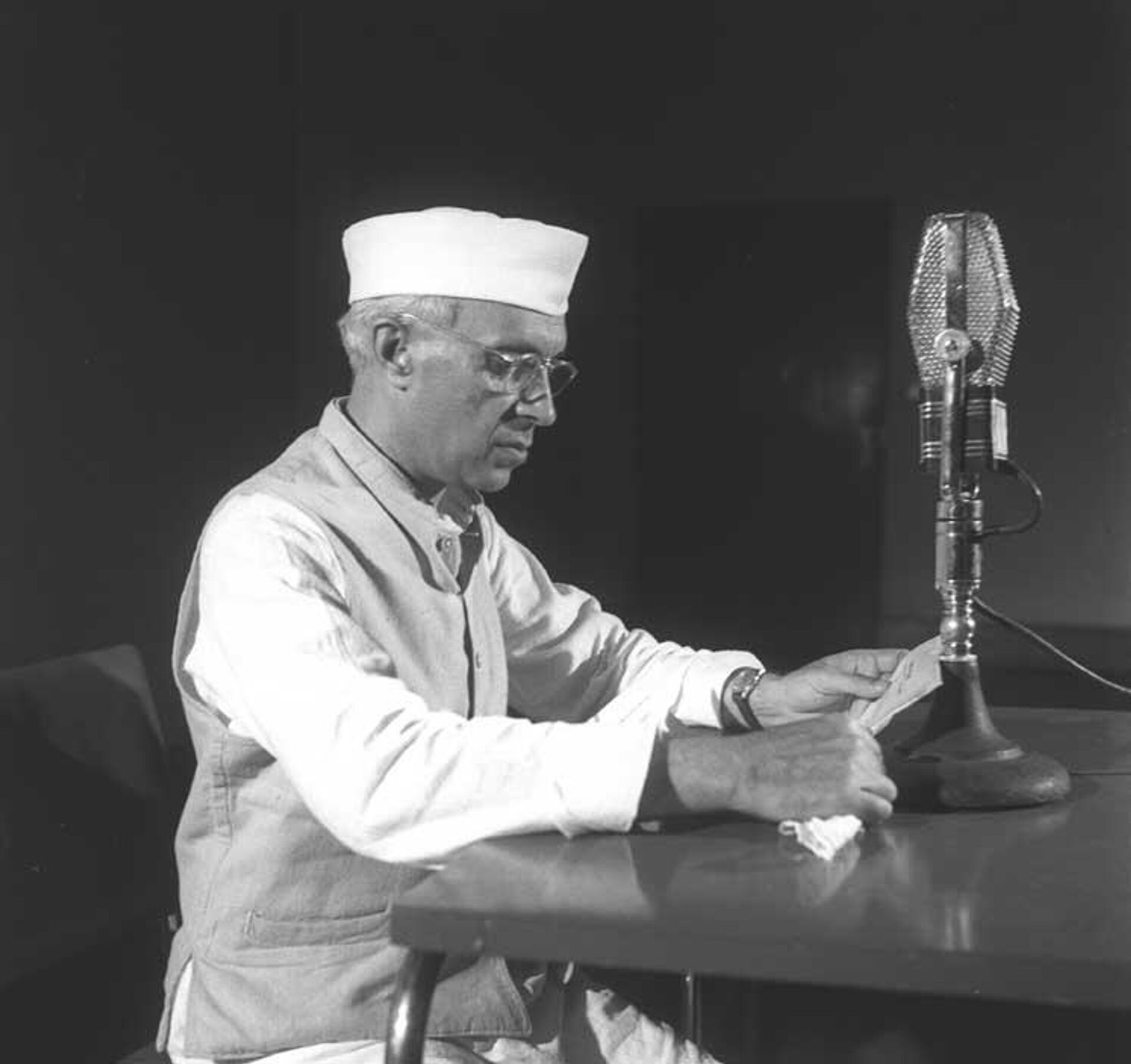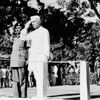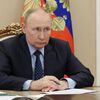India at 75: Untold Story of How Russia Inspired, Aided and Steeled Delhi’s Drive for Independence
04:00 GMT 15.08.2022 (Updated: 08:51 GMT 15.08.2022)

© Photo : Author Unknown
Subscribe
Monday is the 75th anniversary of Indian independence, with festivities planned across the country to celebrate the jubilee of the end of British rule. Russia played a hugely important, but largely forgotten role in helping India on its journey to self-rule, and with post-independence state construction. Here’s a refresher on how it all took place.
India’s struggle for independence began more than a century-and-a-half ago with the Great Rebellion of 1857-1858. The series of uprisings, also known as the First War of Independence, was drowned in blood by the British, with as many as 150,000 Indians, two thirds of them civilians, as well as 2,400 British troops, civil servants, and members of their families killed in the violence that raged across the colony.
London responded to the rebellion with a series of reforms, with the East India Company – a joint stock enterprise through which the state and private interests effectively ran and exploited India as a corporation from the early 17th century onward, replaced with direct rule. This period, starting in 1858 and continuing all the way to Indian independence in 1947, was known as the British Raj (‘raj’ being the Hindi word for ‘kingdom,’ ‘realm,’ or ‘empire’).
The colonialists sought to parry rising pro-autonomy sentiments and a growing sense of national identity among India’s upper classes through a shrewd divide and rule strategy, including economic and administrative concessions to dozens of vassal princely states, and by successfully playing religious and caste differences off against one another. This allowed the metropole to retain control over more than two thirds of India’s vast riches of tea, jute, rubber, textiles, and food, and to stifle the populous nation’s economic development. Economist Utsa Patnaik estimates that the last two centuries of British rule cost India the equivalent of $44.6 trillion in wealth.

1864 'Johnson's Map of Hindostan or British India'.
© Photo : Johnson, A. J.
By the late 19th century, two dominant trends emerged among the budding Indian national movement: moderates and radicals. The former sought reforms and minor concessions from the British, but did not speak of independence. The latter, consisting of more radically-oriented forces, demanded an end to the colonial and feudal yoke, full stop, as well as the boycott of all things British.
1885 saw the formation of the Indian National Congress (INC) – a radically-oriented national liberation movement which would guide India to independence through a decades-long struggle. Resistance organizer Mahatma Gandhi joined the INC in 1915 after his return from South Africa, and became its unofficial spiritual leader from the 1920s on.

Mahatma Gandhi, center, accompanied by Abha Gandhi, left, and Dr. Sushila Nayyar, right, one of his attendants during his present illness, is shown walking in the garden of Birla House, New Delhi, India, October 2, 1947, as he celebrates his 78th birthday. H.S. Suhrawardy, former chief minister of Bengal Province, is at extreme left, rear
© AP Photo
Revolutionary Inspiration
The failed Russian Revolution of 1905-1907 served as a major inspiration for Gandhi and the INC.
“The present unrest in Russia has a great lesson for us…The power of the Viceroy is in no way less than that of the Tsar…We too can resort to the Russian remedy against tyranny,” Gandhi wrote in the bilingual weekly The Indian Opinion in late 1905. “If the Russian people succeed, this revolution in Russia will be regarded as the greatest victory, the greatest event of the present century,” he added.
Other pro-independence publications and figures similarly praised the revolutionary upheaval to the north, and called on Indians to study and emulate the methods of the revolutionaries to take up arms against the British.
Meanwhile, back in Russia, Vladimir Lenin praised the Indian independence movement and penned a scathing attack against the British over the brutality of their rule.
“In India lately, the native slaves of the ‘civilized’ British capitalists have been a source of worry to their ‘masters.’ There is no end to the acts of violence and plunder which goes under the name of the British system of government in India. Nowhere in the world – with the exception, of course of Russia – will you find such abject mass poverty, such chronic starvation among the people,” Lenin wrote in 1908.
The Russian revolutionary predicted that the rising consciousness for political mass struggle among Indian workers would “doom” the “British regime in India” to destruction.
Cooperation between the Indian revolutionaries and their Russian cousins expanded dramatically after the October Revolution of 1917 and the creation of the Soviet Union in late 1922.
In 1927, future Prime Minister Jawaharlal Nehru and other Indian national movement leaders traveled to the USSR for the 10th anniversary of the October Revolution, evading British prohibitions to do so. There, Nehru studied the works of Marx and Lenin on imperialism, and marked support for Soviet Russia’s anti-imperialist rhetoric, but not its atheistic, materialist bent.
Soviet and British media covered the visit extensively, with the British press seeing it as evidence of a Bolshevik conspiracy to undermine order in the colonies, while Soviet newspapers gave readers a primer on India’s independence struggle, and the roles played by Nehru, Gandhi, and of course, India’s socialist and communist parties.
Nehru was received by Soviet head of state Mikhail Kalinin in the Kremlin, and spent four days touring the country to get a sense for how the new government was getting on. While in Moscow, he also met with other major national liberation movement and communist figures from around the world, including German revolutionary Clara Zetkin, Soong Chingling, widow of Chinese statesman Sun Yat-sen, and Diego Rivera, the prominent Mexican painter and leftist activist.
Upon his return to India, Nehru published a short book entitled “Soviet Russia: Some Random Sketches and Impressions,” in which he would touch upon the USSR’s educational, healthcare, and legal systems, as well as the status of minorities and women in the new revolutionary state. Observers would later conclude that Nehru’s 1927 trip to the USSR would shape his inclinations toward socialism, albeit of the non-Marxist variety, which the INC adopted as its official ideology in 1936.
Throughout the 1920s and much of the 1930s, London would see Soviet red agents behind every palm tree in India, blaming Moscow for unrest in its colony, and accusing it of seeking to spark a communist revolution in the Asian nation.
In his famed 1946 book “The Discovery of India,” Nehru wrote about the USSR, its ideology, place in the postwar world order, and impact on the future India at length:
“A study of Marx and Lenin produced a powerful effect on my mind and helped me to see history and current affairs in a new light. The long chain of history and of social development appeared to have some meaning, some sequence, and the future lost some of its obscurity. The practical achievements of the Soviet Union were also tremendously impressive. Often I disliked or did not understand some development there and it seemed to me to be too closely concerned with the opportunism of the moment or the power politics of the day. But despite all these developments and possible distortions of the original passion for human betterment, I had no doubt that the Soviet Revolution had advanced human society by a great leap and had lit a bright flame which could not be smothered, and that it had laid the foundations for that new civilization towards which the world could advance.”
Nehru had no issues accepting Marx’s dialectical materialism, but criticized it for its lack of a “moral approach” to politics and a lack of idealism found in the Vedanta school of Hindu philosophy. “I did not like the frequent divorce in communist, as in other, practice between action and these basic urges or principles. So there was an odd mixture in my mind which I could not rationally explain or resolve,” he wrote.
Nehru praised the USSR’s construction of a multinational state, its advances in education, culture, medicine, and its economic and industrial growth, as well as the “courage, tenacity, and whole-heartedness” that the Soviet people displayed in the war against Nazi Germany.
In the tome, written at the dawn of the Cold War, Nehru predicted that the future world would depend largely “on American and Soviet policy, and on the degree of coordination or conflict between the two and Britain…Whatever the future may hold, it is clear that the economy of the USA after the war will be powerfully expansionist and almost explosive in its consequences. Will this lead to some new kind of imperialism? It would be another tragedy if it did so, for America has the power and opportunity to set the pace for the future.”
The Indian independence leader also effectively predicted Moscow’s future policy in relation to India by asking a series of questions, the answers to which he said would determine whom the people of India and other colonial territories would side with in the Cold War struggle:
“Where do the hundreds of millions of Asia and Africa come in this picture? They have become increasingly conscious of themselves and their destiny, and at the same time are also world conscious…For them, inevitably, the test of each move or happening is this: Does it help towards our liberation? Does it end the domination of one country over another? Will it enable us to live freely the life of our choice in cooperation with others? Does it bring equality and equal opportunity for nations as well as groups within each nation? Does it hold forth the promise of an early liquidation of poverty and illiteracy and bring better living conditions?”
Self-Determination Means Economic Independence
Nehru would receive answers to these questions after India won its independence. The USSR became one of the first nations to recognize India (with the nations actually establishing diplomatic ties several months before India achieved formal self-rule in 1947), and in the early 1950s, Moscow agreed to assist New Delhi with its goals of economic self-sufficiency, industrialization, and diversification away from its status as a raw materials appendage of Britain and other Western powers.
“The Western countries at the time were not prepared to encourage India’s industrialization program. Rather, they desired India’s continued existence as a rich potential for the supply of raw materials and a profitable market for their finished goods. Thus, despite the political changes, they had not given up their imperial psychosis,” Indian economist R.K. Sharma wrote in his 1980 book “Indo-Soviet Relations: Economic Analysis.”
In this situation, Sharma noted, the first trade agreement inked between New Delhi and Moscow in 1953 “provided India with an alternative channel which had the effect of breaking the Western monopoly on the supply of capital goods, and also an outlet for traditional products on fair terms of trade…Indo-Soviet trade [was] directed towards providing economic and technical means for building industries that produce industries – a process that eliminates dependence on foreign countries.”
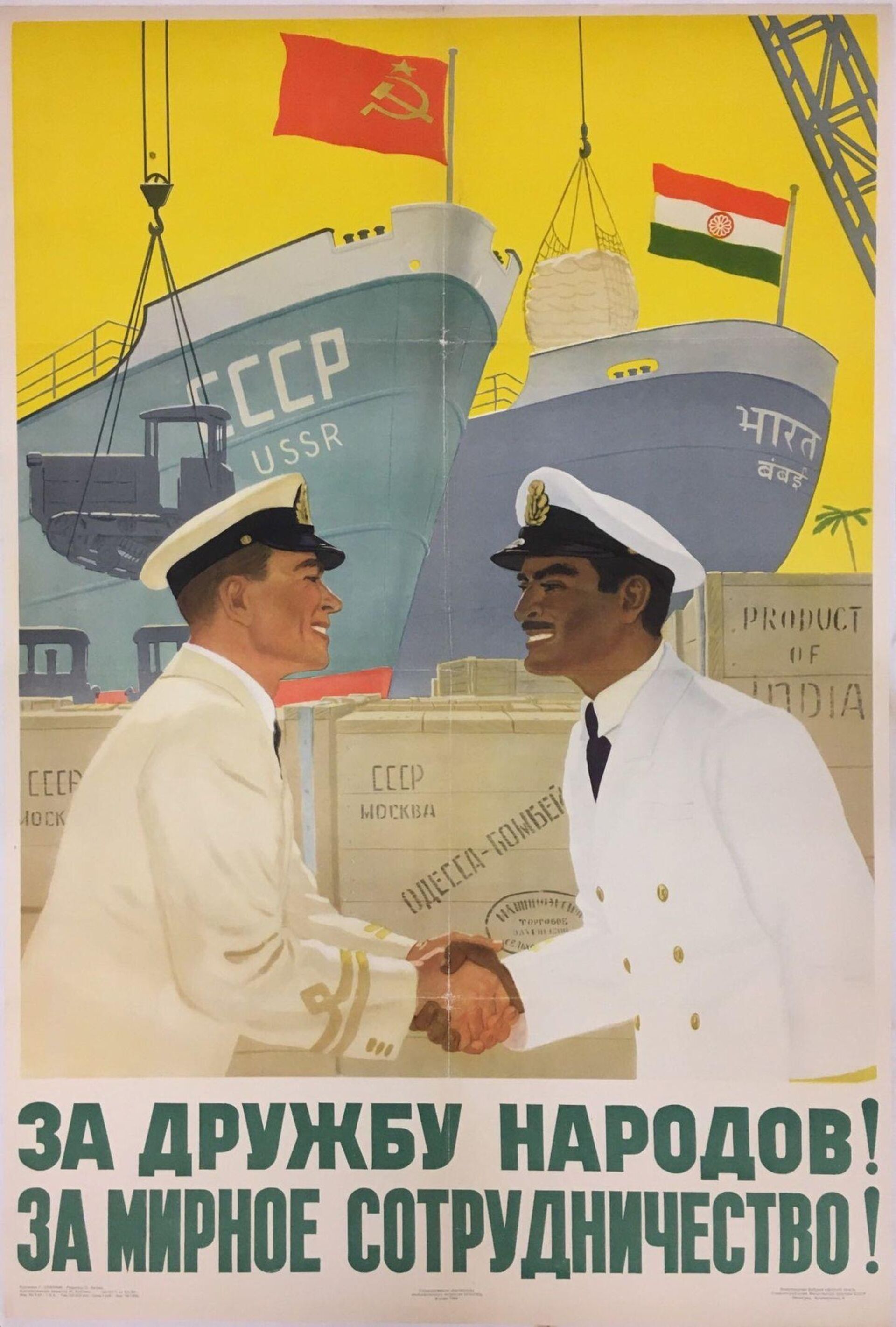
Soviet propaganda poster on Indo-Soviet friendship. Text reads "For friendship between peoples! For peaceful cooperation!"
© Photo : Author Unknown
In the years and decades that followed, the USSR would provide tens of billions of rubles in direct assistance to India to help develop basic industries, including iron and steel, oil and electricity – all key ingredients of a national industrial base.
In their 1987 book “The Soviet Union and the Third World: The Last Three Decades,” Andrzej Korbonski and Francis Fukuyama calculated that by the end of the 1970s, the USSR had helped to create “30 percent of India’s steel capacity, 70 percent of its oil extraction facilities, 30 percent of its oil refining capacity, 20 percent of its power-generating capacity, and 80 percent of its metallurgical equipment production.”
“Moreover,” they wrote, “Moscow demonstrated its economic support for India by offering to finance public-sector projects (which the West was reluctant to do) and by providing more favorable terms than the West: lower interest rates, longer repayment periods, and repayment in Indian currency or goods rather than in convertible or hard currency.”
Major industrial projects built with Soviet help included the Bhilai, Bokaro, and Visakhapatnam steel plants, the large antibiotics and pharmaceutical factories at Rishikesh and Hyderabad, which gave a kick-start to India’s now flourishing pharmaceutical industry, a thermal power station at Neyveli, a mining equipment plant in Durgapur, an electromechanical enterprise at Korba, a surgical instruments plant, oil refineries, construction assistance for a network of canals and dams, tractors, fertilizers, etc.

India's massive Bhilai Steel Plant, built with Soviet assistance.
© Photo : Facebook / Bhilai Steel Plant - SAIL
Moscow also provided New Delhi with engineering and technical know how, with thousands of technicians, engineers, and scientists traveling to India to help set up industries and train their workers, and tens of thousands of Indians coming to the USSR to study at universities and technical colleges.
Sharma contrasted Soviet development aid to India with assistance provided by the United States, noting that the latter was subject to conditions, such as concessions to American private investors, limited support for industrialization, loan settlements only in dollars or gold, and often political pressure. The economist recalled, for example, how India’s support for Egypt during the Suez Crisis of 1956 prompted Washington to threaten to cut off food aid.
Sharma also compared Moscow’s favorable loan agreements of 2-2.5 percent interest over 12-20 years to the 4.5-8.5 percent interest rates offered by Washington and the World Bank.

Indian student listens to lecture the faculty of physics at Patrice Lumumba People's Friendship University in Moscow, 1975.
© Sputnik / Eduard Etinger
Along with industrialization assistance, Moscow also provided New Delhi with other forms of economic, technical, and medical support, delivering over a billion doses of smallpox vaccine to the country beginning in 1960 as part of the global campaign to eradicate the virus, and sending the first Indian satellite into space in 1975. Rakesh Sharma, the first (and so far only) Indian cosmonaut, traveled on board a Soyuz rocket to the Salyut 7 orbital space station in 1984 under the Interkosmos program.
In a live tele-link from orbit, when asked by Indian President Indira Gandhi how India looked from space, Sharma replied “Saare Jahan Se Achaa” (Urdu for “the best in the world”) – a reference to the title of a patriotic 1904 poem by Muhammad Iqbal that became the anthem for Indian opposition to colonial rule.
No Revolution is Worth Anything Unless It Can Defend Itself
Soviet support for India during the Cold War also included vast quantities of military equipment, and production licenses which enabled New Delhi to manufacture weapons themselves and create a national military-industrial complex (MIC). This assistance ranged from MiG-21 fighters (which the Indian Air Force continues to operate to this day – and plans to retire by the year 2025), to large warships, tanks, and man-portable anti-tank and anti-aircraft weaponry. Indian-Russian defense cooperation continues to this day, with Moscow accounting for more than half of India’s imported military hardware, and licenses for Russian weapons continuing to be sold to the Indian MIC.

Indian Defense Minister Swaran Singh poses for a photo with Soviet schoolchildren during an October 1969 visit to Moscow as part of a military delegation.
© Sputnik / Vyacheslav Runov
Along with armaments, Moscow provided other forms of security assistance to the South Asian nation during the Cold War, including on the diplomatic front.
During the 13-day Indo-Pakistani War in December 1971, in response to the assembly of a large US naval task force in the Bay of Bengal, the deployment of the USS Enterprise carrier group in the Indian Ocean and the dispatch of a British naval group led by the HMS Eagle aircraft carrier toward the Arabian Sea, Moscow deployed 16 battlecruisers, destroyers, attack submarines and at least one nuclear-armed Boomer sub to the region, and warned Washington that prompt “countermeasures” would be taken in the event of a US intervention in the crisis.
50 years ago, this week in 1971, the USA threatened India to stop the 1971 war.
— Advaid അദ്വൈത് (@Advaidism) December 4, 2021
Kissinger spurred Nixon to send the US 7th Fleet’s Task Force, led by the nuclear-powered aircraft carrier USS Enterprise, to the Bay of Bengal.
An alarmed India sent an SOS to USSR. #Thread pic.twitter.com/327QQ7VF55
The deployment was undertaken in accordance with the Indo-Soviet Treaty of Friendship and Cooperation, signed just months earlier in August of 1971, and which would become the bedrock foundation of the strategic partnership between Moscow and New Delhi that continues to this day.
According to Indian accounts of what happened next, the US fleet Admiral told the 7th Fleet Commander William P. Mack "Sir, we are too late. The Russians are here." Ultimately, Washington and London backed down, Islamabad surrendered, and the new nation of Bangladesh was born out of the former East Pakistan.
The 1971 crisis wasn't the first time that India received direct Soviet diplomatic and military support in a pinch. A decade earlier in December 1961, when Indian forces moved to take back the Portuguese-controlled India territories in Goa, Daman and Diu, Moscow blocked a US and Portuguese ceasefire resolution at the United Nations. Meanwhile, the USSR's Egyptian allies blocked a Portuguese naval task force sailing east to try to stop New Delhi from passing through the Suez Canal, ultimately allowing India to present Lisbon with a fait accompli and to liberate its lost territories in just 48 hours.

Soviet propaganda poster circa early 1960s showing India pushing Portuguese colonialist into the sea out of Goa. Caption reads "Colonialism is doomed everywhere!"
© Photo : Author Unknown
Into the 21st Century
The foundations for relations between Moscow and New Delhi that were laid down in 1947 and strengthened during the Cold War continue to inform the basis of modern-day cooperation.
In a 2017 article in The Times of India commemorating the 70th Anniversary of diplomatic relations, Russian President Vladimir Putin wrote that the 1971 Treaty “set forth the fundamental principles of bilateral relations, such as respect for the sovereignty of each other’s interests, good-neighborliness, and peaceful coexistence” which would be built upon in subsequent agreements.
Putin emphasized the significance of cooperation in the nuclear and traditional energy sectors, ongoing “large-scale projects” in mechanical engineering, chemicals and mining, aircraft construction, pharmaceuticals and medicine, and cooperation in a host of other areas. Putin also pointed to the countries’ close cooperation at various international and regional groupings, including the BRICS group of nations and the Shanghai Cooperation Organization.
“India and Russia are equal partners in international affairs. Our countries support the establishment of a multipolar democratic system of international relations based on strict compliance with the principles of law and resting upon the United Nations’ central role. We are willing to further jointly counter challenges and threats of the 21st century, promote the unifying agenda and contribute to maintaining global and regional security,” Putin stressed.
A century on from the first inklings of cooperation between Moscow and the independence movement in New Delhi, the bedrock of ties which was established during and after India’s independence struggle and the Cold War, and strengthened over the three decades since the collapse of the USSR, continues to provide both countries with a solid and dependable economic, diplomatic, and defense partner.
The strength of this partnership has been demonstrated in the wake of the ongoing Ukraine crisis, with India not only refusing to go along with Western sanctions against Russia, but ramping up trade with Moscow, and expressing interest in new cooperation tools, including a free trade agreement, and new ruble-rupee payment schemes.
